News
Sri Lanka Advances to 200th Position in FIFA Rankings: A Closer Look at the Journey
Sri Lanka’s national football team has made a significant leap, advancing to the 200th position in FIFA’s global rankings following their recent win against Cambodia in the AFC Cup qualifiers. This achievement is a welcome improvement, considering Sri Lanka’s struggle to rise from near the bottom of the table in recent years.
Historical Perspective: A Long Road to Recovery
Sri Lanka’s journey in the FIFA rankings has been a rollercoaster over the past two decades. In 2000, the team ranked 153rd out of 202 countries, signaling potential for growth. Their best position came in 2005 when they climbed to 139th, showcasing some promise on the international stage. However, inconsistency, lack of infrastructure, and limited international exposure led to a steep decline in subsequent years.
In 2010, Sri Lanka dropped to 151st, and by 2015, they slipped further to 172nd. The lowest point came in 2020, when the team was ranked 206th out of 210 countries. This ranking placed Sri Lanka among the bottom five footballing nations globally, reflecting the challenges the national team faced.
Analyzing the Current Rise
The recent jump to 200th may seem modest, but it represents a glimmer of hope for the Sri Lankan football community. The win against Cambodia in the AFC Cup qualifiers was crucial, not just for points but for morale. Cambodia, ranked higher than Sri Lanka before the match, was a key opponent. Defeating them showed that Sri Lanka has the potential to compete in international fixtures with the right preparation and strategy.
This rise also highlights the incremental changes happening within the national setup. While there’s still a long way to go to reach their highest-ever ranking of 122nd in 1998, the recent improvements suggest that Sri Lanka is gradually moving in the right direction. However, the rise in rankings also raises important questions about sustainability. Can Sri Lanka maintain this upward trajectory, or will it be a short-lived success?
Key Challenges Ahead
- Inconsistent Performances: Sri Lanka’s ranking fluctuations over the years indicate that consistency is one of their greatest challenges. The team needs to string together positive results in upcoming AFC Cup matches to solidify their current standing.
- Domestic Football Development: The success of any national team depends heavily on the strength of its domestic leagues. Sri Lanka’s football infrastructure remains underdeveloped compared to regional counterparts. A lack of investment in grassroots programs, coaching standards, and facilities has hindered the production of talented players. Revamping domestic leagues and focusing on youth development will be crucial for long-term success.
- International Exposure: Limited exposure to high-level international competition is another major hurdle. Sri Lankan players lack the experience of regularly competing against top-tier teams, both in South Asia and beyond. Engaging in more international friendlies and tournaments could bridge this gap and provide valuable learning experiences.
- Federation Mismanagement: Sri Lanka’s football administration has been criticized for inefficiency, mismanagement, and lack of vision. For real progress to be made, there must be a shakeup in how football is governed in the country. Transparent and accountable leadership is essential to fostering an environment where players can thrive.
Looking Ahead: The Future of Sri Lankan Football
Sri Lanka’s jump in the FIFA rankings may serve as a motivating factor for both the players and fans. The national team has the talent and potential to improve further, but consistent development requires a holistic approach. More investment in the sport at both the grassroots and national levels is necessary, along with sustained efforts to build a strong football culture in the country.
If Sri Lanka can build on this recent success and address the systemic issues holding them back, there’s hope for them to move further up the rankings. With strategic focus and proper support, the nation could aspire to return to the levels seen in the late 1990s and early 2000s.
As Sri Lanka moves forward, their ranking will be a clear indicator of progress in both domestic football development and international competition, and it remains to be seen whether this improvement is the start of a new era for Sri Lankan football or just a temporary rise.
Cricket
Harmanpreet Leads from the Front as India Women Seal 5–0 Clean Sweep Over Sri Lanka
India Women capped off a dominant tour with another composed performance, defeating Sri Lanka Women by 15 runs in the fifth and final T20I to complete a 5–0 clean sweep of the series. The result underlined India’s superiority throughout the tour, as they consistently controlled key phases of play and delivered under pressure.
Batting first, India Women posted an imposing 175 for 7 from their 20 overs. The innings was anchored by captain Harmanpreet Kaur, who led from the front with a commanding 68 off 43 balls. After early setbacks that saw Shafali Verma, Gunalan Kamalini and Harleen Deol depart inside the powerplay, India required stability — and Harmanpreet provided exactly that.
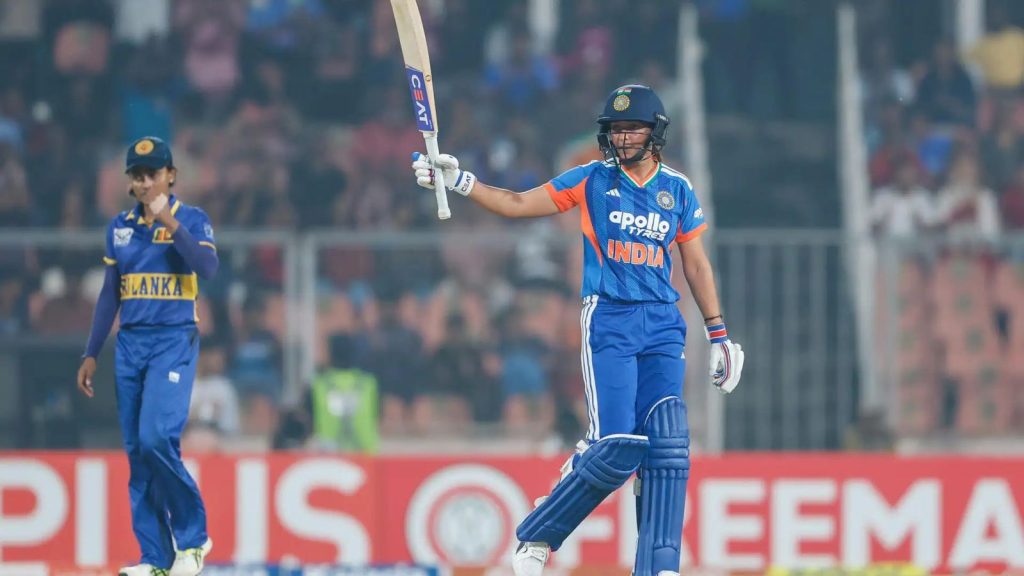
The skipper rotated the strike efficiently before accelerating with authority, striking nine boundaries and a six to maintain momentum. Support came in patches, with Amanjot Kaur contributing a useful 21, but it was the late surge that lifted India to a formidable total. Arundhati Reddy produced a stunning cameo, remaining unbeaten on 27 from just 11 deliveries, her clean striking in the death overs decisively shifting momentum in India’s favour.
Among the Sri Lankan bowlers, Kavisha Dilhari and Chamari Athapaththu were the standouts, claiming two wickets apiece, but the attack struggled to contain India in the closing stages.
Chasing 176, Sri Lanka Women responded with intent and determination. Hasini Perera starred at the top of the order with a fluent 65 off 42 balls, while Imesha Dulani compiled a composed 50, keeping the chase alive with a crucial partnership that threatened to tilt the contest.
India, however, showcased their experience and composure. Timely breakthroughs in the middle overs stalled Sri Lanka’s momentum, with Deepti Sharma, Sneh Rana, Vaishnavi Sharma and Shree Charani all making important contributions with the ball. Sharp fielding — highlighted by a crucial run-out — further tightened India’s grip on the match.
Despite a late push from Rashmika Sewwandi, Sri Lanka finished on 160 for 7, falling 15 runs short of the target.
The victory sealed a comprehensive 5–0 series whitewash for India Women, reflecting their consistency, squad depth, and tactical clarity throughout the series. Harmanpreet Kaur’s leadership and match-winning performance in the final game perfectly encapsulated India’s dominance as they closed the tour on a resounding high.
Brief Scores
India Women 175/7 in 20 overs
Harmanpreet Kaur 68 (43), Arundhati Reddy 27* (11)
Kavisha Dilhari 2/11, Chamari Athapaththu 2/21
Sri Lanka Women 160/7 in 20 overs
Hasini Perera 65 (42), Imesha Dulani 50 (39)
Deepti Sharma 1/28, Sneh Rana 1/3
News
Sri Lanka Rugby Approves National Referee Development Plan and Elite Referee Panel
Sri Lanka Rugby (SLR) has granted conditional approval for the implementation of a National Referee Development Plan and the establishment of an Elite Referee Panel, subject to final ratification by the Sri Lanka Rugby Council.
According to an official press release, the initiative has been introduced in response to a national shortage of qualified rugby referees, a challenge that has impacted domestic competitions in recent seasons. The proposed development plan includes a one-time intake of 30 referee candidates, aimed at strengthening officiating standards across all levels of the game.
Structured National Intake Process
Under the approved framework, referee candidates will be drawn from three distinct sources. These include nominations from the Tri-Forces, selections through an open national application process, and candidates identified through existing rugby structures. All selected participants will undergo a standardised training and accreditation pathway implemented by Sri Lanka Rugby, aligned with World Rugby guidelines and best practices.
Sri Lanka Rugby stated that the programme is designed to create a sustainable pipeline of referees, ensuring consistency, professionalism, and improved match control in domestic competitions.
Elite Referee Panel Established
In parallel, SLR has approved the formation of an Elite Referee Panel, which will consist of the country’s top-performing referees. This panel is expected to officiate high-level domestic matches and serve as a talent pool for regional and international assignments.
The Elite Panel will operate under clearly defined performance, fitness, and assessment criteria, with ongoing evaluations to maintain officiating standards.
Interim Measures for Ongoing Competitions
As an immediate interim solution, Sri Lanka Rugby has decided to request two foreign referees from Asia Rugby to officiate matches from the Super Round stage onwards in the current competition structure. This move aims to ensure neutrality, consistency, and fairness during decisive matches while local referee capacity is strengthened.
Role of Referees’ Society Recognised
The Executive Committee also acknowledged the long-standing contribution of the Sri Lanka Society of Rugby Football Referees, confirming that the organisation will continue to play a key role in grassroots referee development and education within the revised framework.
Focus on Match Integrity and Player Safety
Sri Lanka Rugby emphasised that the approved reforms are part of a broader effort to enhance match integrity, player safety, and public confidence in officiating, as well as to align local rugby administration with international standards.
The final implementation of the National Referee Development Plan and the Elite Referee Panel remains subject to formal approval by the Sri Lanka Rugby Council
Cricket
England Stick with Brook for Sri Lanka Tour as World Cup Planning Intensifies
England Tour of Sri Lanka 2026
England have opted for continuity and stability by retaining Harry Brook as captain for their white-ball tour of Sri Lanka in 2026, as preparations intensify for the ICC Men’s T20 World Cup later that year.
The tour, which forms a key part of England’s World Cup build-up, will feature three One-Day Internationals and three T20 Internationals, with matches scheduled to be played in Colombo and Kandy. With Sri Lanka set to co-host the global tournament alongside India, the series is expected to serve as a valuable rehearsal under subcontinent conditions.
Balanced Squads with an Eye on the Future
England’s selections reflect a careful blend of experience and emerging talent. Josh Tongue has earned his maiden IT20 call-up following strong domestic performances, while Brydon Carse continues to cement his role as a versatile pace option across formats.
Fast bowler Jofra Archer remains part of England’s long-term World Cup plans and has been named in the provisional ICC Men’s T20 World Cup squad, though he will not travel to Sri Lanka as he continues his recovery from injury.
Will Jacks returns to the white-ball setup after missing England’s previous assignment, adding depth to both the batting and bowling units, while Zak Crawley’s recall to the ODI squad marks his return to the format after more than two years.
Experience Key in Subcontinent Conditions
Senior figures Jos Buttler and Joe Root provide leadership and experience, particularly important as England fine-tune combinations and roles in conditions similar to those expected during the World Cup.
Spin is expected to play a decisive role throughout the series, with Adil Rashid and Liam Dawson likely to shoulder major responsibility. England’s batting group will focus on adapting to slower surfaces, where shot selection and strike rotation will be critical.
Tour Schedule and World Cup Focus
England’s tour party is scheduled to depart on January 18, 2026, with the series getting underway at the R Premadasa Stadium in Colombo. As the countdown to the World Cup continues, the Sri Lanka tour represents an important opportunity for England to build momentum, establish clarity in selection, and gain confidence under Brook’s leadership.
England Men’s IT20 Squad – Sri Lanka Tour & Provisional ICC Men’s T20 World Cup
Harry Brook (Captain), Rehan Ahmed, Jofra Archer* (ICC Men’s T20 World Cup only), Tom Banton, Jacob Bethell, Jos Buttler, Brydon Carse* (Sri Lanka tour only), Sam Curran, Liam Dawson, Ben Duckett, Will Jacks, Jamie Overton, Adil Rashid, Phil Salt, Josh Tongue, Luke Wood
England Men’s ODI Squad – Sri Lanka Tour
Harry Brook (Captain), Rehan Ahmed, Tom Banton, Jacob Bethell, Jos Buttler, Brydon Carse, Zak Crawley, Sam Curran, Liam Dawson, Ben Duckett, Will Jacks, Jamie Overton, Adil Rashid, Joe Root, Luke Wood
-

 Football11 months ago
Football11 months agoSri Lanka Schools National Championship 2025: Super 8 Fixtures and Grouping
-

 News11 months ago
News11 months ago2025 Schools Rugby Season Set to Thrill Fans with Knockout and League Action
-

 Cricket7 months ago
Cricket7 months agoNuwan Thushara Shines as RCB Storms into IPL 2025 Final
-

 Live4 years ago
Live4 years agoLive Broadcast of Syria vs Sri Lanka | AFC U23 Asian Championship Qualification
-

 News7 months ago
News7 months agoMajor Shake-Up in Sports Governance: New 2025 Regulations Reform National Sports Bodies in Sri Lanka
-

 Football12 months ago
Football12 months agoFFSL Rebrands Division-1 as ‘League-One’ with a Bold New Vision
-

 Cricket11 months ago
Cricket11 months agoSri Lanka’s Greatest Cricketers: Top Batters and Bowlers of All Time
-
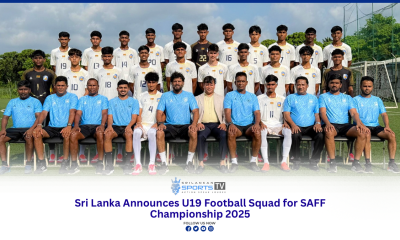
 Football8 months ago
Football8 months agoSri Lanka Announces U19 Football Squad for SAFF Championship 2025

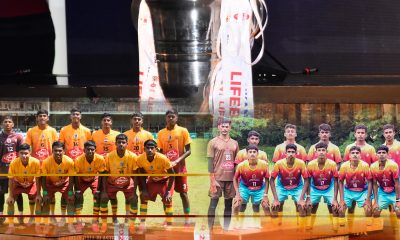

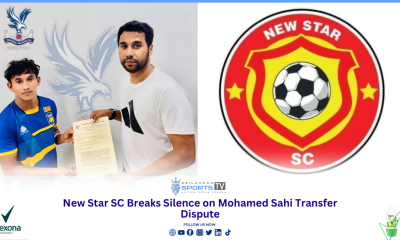

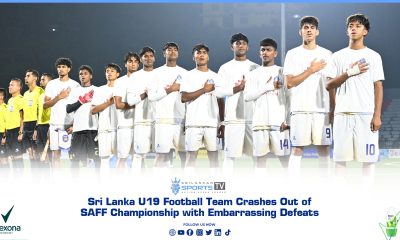



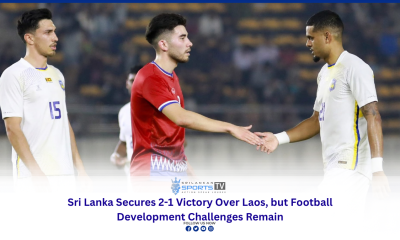








You must be logged in to post a comment Login